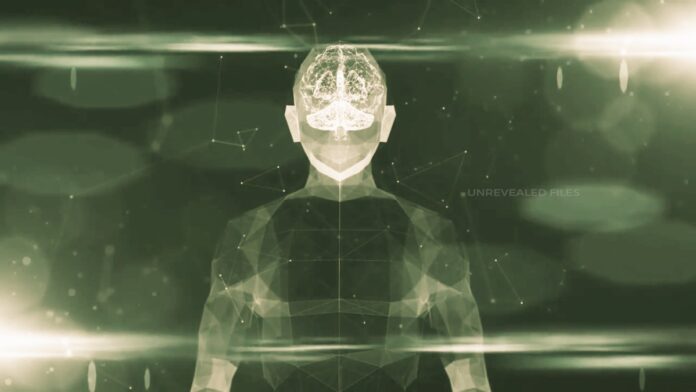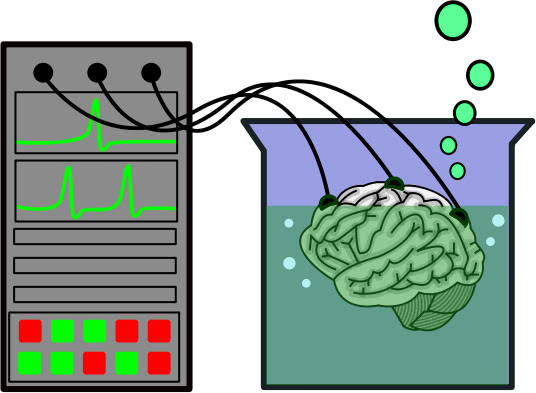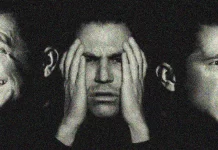Many physicists worldwide believe that we are simulated beings and that our entire existence is just a program on someone’s computer. The great philosopher René Descartes used to say, “I think. Therefore I am”. He was searching for a truth that could not be disputed, and the act of thinking should be indisputable proof of the individual’s existence. Nevertheless, our understanding of existence and Reality is still developing.
So is your Reality a complex computer simulation? Why do some physicists believe that physical matter is not natural? What scientific experiments have changed our view of Reality? Is everything we see just a computer simulation, not Reality? Know the answers to all these questions with a scientific approach and quotes.
Contents
What is Simulated Reality?
Simulated Reality is the hypothesis that our Reality is simulated in complex computers; in other words, we live in a computer simulation. For example, our world is affected by complex or quantum computers to a degree almost similar to Reality. It may contain conscious minds that may or may not know they live inside a complex or quantum computer simulation. Simulated Reality is different from Virtual Reality because Simulated Reality would be hard or impossible to separate from actual Reality. In contrast, Virtual Reality is a technologically achievable concept that can be easily distinguished from the experience of actuality. We will discuss in detail this topic from a philosophical view to practical applications in computing.
Simulated Reality According to Physics and Neuroscience
There are different theories about Reality in the world of quantum physics and neuroscience. Let’s examine more plunging into the quantum realm. We will find that matter is made up of subatomic particles, including protons, neutrons, and electrons, that remain in a state of waves until they are observed, which means not being seen. In fact, at the quantum level, they do not look like particles at all. You can think of these as a cloud of possibilities. This concept is known as superposition, meaning that a particle exists in many possible positions until it is measured or observed.
This idea of superposition was proposed in 1801 by physicist Thomas Young in the double-slit experiment. When we pass rays of light through a slit, it produces an expected line of light as it should be. But, something strange happens when light rays are passed through the double-slit. Instead of two lines of light, we see many lines. This suggests that photons also act like waves rather than particles as if they were rippling through the slits and scattered in different directions from each other. This pattern of particles has led scientists to believe that matter can act as particles and waves. It was a great discovery that changed the world of physics forever. As we know, everything in this Universe is made of matter, including us, and particles behave differently as we observe them. Thus it is possible that things only exist when they are being followed. For example, would black holes still exist if we hadn’t measured their X-rays? Some physicists, such as Max Tegmark, believe that black holes and everything we consider accurate is mathematical information. This idea is known as Information Realism.
If scientists can send signals to a living brain in a vat, stimulating all the senses, then we can convince the brain that it is in a human body and experiencing Reality. Maybe we can reprogram our realities at the neural level. For Example, Imagine being able to fly anywhere, drive a fancy car, and live a successful life forever. Your happiness, achievements, and success level will be limited only by your ability to visualize them.
Some neuroscientists, including Professor Anil Kumar Seth, suggest that our brains constantly hallucinate Reality. For Example, Have you ever had a dream that felt so real that you thought you were disoriented even after waking up? I once found myself in the Terminator Salvation movie, and after waking up, I started running out of the house. Well, our nightmares and our perception of Reality are processed in the visual cortex of our brain. This is why it can be difficult to tell the difference between them.
Brain in a Vat
The brain in a vat is a scenario used in many thought experiments to highlight specific aspects of human notions of knowledge, Reality, truth, mind, consciousness, and meaning. For example, it is a current rendition of Gilbert Harman’s wicked demon thought experiment, which René Descartes first proposed. It describes a scenario in which a mad scientist, machine, or other entity removes a person’s brain from the body, suspends it in a vat of life-sustaining liquid, and connects its neurons to a supercomputer, which provides it with electrical impulses identical to those received by the brain typically.
According to this theory, the computer would then simulate Reality, including appropriate responses to the brain’s output. At the same time, the disembodied brain would continue to have perfectly normal conscious experiences, similar to those of a person with an embodied brain but without any connection to objects or events in the real world.
Boltzmann Brains
Boltzmann Brains are randomly generated disembodied brains that float in a vast sea of subatomic particles, with the appearance of external sensations and realistic memories but which only appear for a short time from the dead universe billions of billions of years in the future. Ludwig Boltzmann was a 19th-century scientist and philosopher who claimed that the second rule of thermodynamics was probabilistic, implying that all systems eventually get more disordered. Because there are many more conceivable disordered states than orderly states, the disorder that emerges is the most likely state a system can be in.
Impossible situations, on the other hand, are not impossible. Boltzmann’s brains were not considered by Boltzmann, although they are an unavoidable result of his ideas. The future dead Universe that generates the Boltzmann’s brains includes all the matter. Still, it has been turned into a heated soup of elementary particles spread randomly over space due to entropy. However, according to Boltzmann, these particles will collide randomly and produce anything.
So why not a brain? It’s a long shot, but in the eternity of time, even the insanely implausible will happen at some point. Perhaps improbable is a strong term, but the existence of Boltzmann’s brains is in line with current scientific thought (not many theoreticians like the idea much). However, they will be far more than humans if they are made. Thus you are more likely to be a Boltzmann brain than a genuine person. You could believe that Descartes or the brain in a vat is wrong, but as a Boltzmann brain, your trouble is worse because you don’t think — therefore, you aren’t.
Simulated Reality from the Philosophical Point of View
The first Philosophical Point of View of Simulated Reality is a version of the simulation hypothesis that was first theorized as a part of a philosophical argument by René Descartes and later by Hans Moravec. René Descartes imagines a scenario in which an evil demon overtook him. He says that all his energy has been utilized to fool him; he is faced with a total delusion about the outside world. In philosophy, this idea of being an output of our observation of Reality is known as Phenomenalism. It states that everything we experience is only sensory data in our brain, such as the virtual Reality of life.
René Descartes proclaims:
“I shall think that the sky, the air, the Earth, colors, shapes, sounds, and all external things are merely the delusions of dreams that the demon has devised to capture my judgment. Therefore, I shall consider myself not having hands, eyes, flesh, blood, or senses, but falsely believing that I have all these things.”
Descartes says that if there is a supremely powerful and crafty deceiver misleading him regularly, then Descartes himself must exist. This concept is based on Descartes’ famous philosophical phrase “cogito, ergo sum,” which means “I think, so I am.” Therefore, if someone questions the existence of Reality, he is thinking, and thus there must be someone behind the thinking because thinking can’t occur without someone.
Some philosophers and authors’ arguments like Nick Bostrom’s “Are You Living In a Computer Simulation?”, Jean Baudrillard’s “Simulacra and Simulation,” Iurii Vovchenko’s “Answers in Simulation” try to address the implications of the simulated Reality on humanity’s way of life and future. Moreover, simulated Reality significantly impacts philosophical questions such as the existence of gods, the meaning of life, etc. thus, there are attempts also to link religion to simulated Reality.
Arguments of Simulated Reality
Simulation Argument
In 2003 philosopher Nick Bostrom developed an argument known as the simulation hypothesis proposes that all the aspects of Reality, including the Earth and the Universe, are likely computer simulations. Some versions rely on developing a simulated reality, a proposed technique that would be realistic enough to convince its inhabitants that the simulation was accurate. His argument states that at least one of the following statements is very likely to be true:
- Human civilization or a comparable civilization is unlikely to reach a technological maturity capable of producing simulated realities, or such simulations are physically impossible to construct.
- A comparable civilization reaching the aforementioned technological status will likely not produce a significant number of simulated realities (one that might push the probable existence of digital entities beyond the possible number of “real” entities in a Universe) for any of several reasons, such as diversion of computational processing power for other tasks, ethical considerations of holding entities captive in simulated realities, etc.
- Any entities with our broad set of experiences are almost certainly living in a simulation.
- We are living in a reality in which posthumans have not developed yet, and we are living in fact.
- We will have no way of knowing that we live in a simulation because we will never reach the technological capacity to realize the marks of a simulated reality.
Learn about Simulation Theory: Simulation Theory: All Possibilities of Reality is Artificial Simulation.
Bostrom’s argument rests on the premise that given sufficiently advanced technology, it is possible to represent the populated surface of the Earth without recourse to digital physics, that the qualia experienced by a simulated consciousness are comparable or equivalent to those of a naturally occurring human consciousness, and that one or more levels of simulation within simulations would be feasible given only a modest expenditure of computational resources in the real world.
First, suppose one assumes that humans will not be destroyed nor destroy themselves before developing such a technology and that human descendants will have no overriding legal restrictions or moral compunctions against simulating biospheres or their historical biosphere. In that case, Bostrom argues it would be unreasonable to count ourselves among the small minority of natural organisms who, sooner or later, will be vastly outnumbered by artificial simulations.
Epistemologically, it is not impossible to tell whether we are living in a simulation. For example, Bostrom suggests that a window could pop up saying: “You are living in a simulation; click here for more information.” However, imperfections in a simulated environment might be difficult for the native inhabitants to identify. For authenticity purposes, even the fake memory of a blatant revelation might be purged programmatically. Nonetheless, if any evidence comes to light, either for or against the skeptical hypothesis, it would radically alter the above probability.
Dreaming Argument
According to the dream argument, dreaming provides preliminary evidence that the senses we rely on to distinguish Reality from illusion should not be fully trusted and that any state dependent on our minds should be carefully examined and rigorously tested to determine whether it is, in fact, Reality.
A dream may be thought of as a form of simulation that can deceive someone who is sleeping. As a result, the dream hypothesis cannot be ruled out, although common sense and simple considerations suggest against it. Descartes also mentions the intellectual basis of this argument. “There are no definitive signals by which we may identify awareness from sleep,” he writes in Meditations on First Philosophy, adding, “It is possible that I am dreaming right now and that all of my sensations are wrong.”
In a talk, Sri Goda Venkateswara Sastrigal pointed out that the Mandukya Upanishad examines one’s waking and dream experiences to indicate that the tendency to see dreams as unreal and waking as genuine is just a partial knowledge of absolute Reality. Unbiased research can disclose a startling fact that is highly relevant and significant to all creatures, whether in the dream or waking state. In comparison to the waking world, the dream world usually looks surreal. By comparing the two conditions, the items of the waking world appear to be of more practical significance than the ones of the dream world.
The dream world is unreal to the awake consciousness, yet the immediate environment is authentic. Similarly, the dreaming mind may claim the Reality of the dream environment and experiences. When you’re dreaming, you have the same feelings of joy, grief, or agony that you do when you’re awake. However, when one awakens from a dream, it is easy to assume that the waking world is far more accurate than the dream.
The Upanishad says that a fully realized soul may intuitively recognize the waking world and its experiences as false as the dream world experiences. The apparent Reality of the Universe is acknowledged after one comprehends the truth of Brahman and its many forms. When one recognizes a mirage as nothing more than a deceptive sight of water, the individual learns to distinguish the truth from the false and the illusory. The research aims to discover one’s true self, made possible by human birth.
Zhuangzi, a Chinese philosopher from the 4th century BC, was one of the first to challenge the boundary between Reality and dreams. He put the dilemma in the form of the well-known “Butterfly Dream,” which went like this:
“Once Zhuangzi dreamt he was a butterfly, a butterfly flitting and fluttering around, happy with himself and doing as he pleased. He didn’t know he was Zhuangzi. Suddenly he woke up, and there he was a solid and unmistakable Zhuangzi. But he didn’t know if he was Zhuangzi who had dreamt he was a butterfly or a butterfly dreaming he was Zhuangzi.” Between Zhuangzi and a butterfly, there must be some distinction! This is called the Transformation of Things. (2, tr. Burton Watson 1968:49)
Both the dream argument and the simulation hypothesis are skeptical hypotheses; yet, much as Descartes recognized that his reasoning caused him to believe in his existence, the presence of the argument itself is proof of its Reality. Psychosis is another state of mind in which some claim that an individual’s views have no physical foundation in f. Yet, psychosissis may have a biological basis in Reality, and explanations differ. The dream hypothesis is also used to develop other philosophical concepts, such as Valberg’s horizon: what this world would be internal to if this were all a dream.
The concept that dreaming is a simulation has gained traction in recent years of dream study, as has the creation of theories regarding the purpose and functions of dreaming. In 2010, Tore A. Nielsen, a dream researcher, wrote in his paper “Dream Analysis and Classification: The Reality Simulation Perspective” that the idea that dreaming is a complex simulation of the world in consciousness during sleep may be a conception of dreaming and simulated Reality that many dream researchers would find challenging to accept. Dreams also immerse us in a virtual simulated reality that includes numerous characters and individuals from our real lives. If dreaming is a simulated reality, the issue becomes whether that description can also be applied to the social reality that the dream permits us to experience.
Because one knows they are dreaming in a lucid dream, the dream argument, the theory that dreaming and being awake are identical, is supported by the concept of lucid dreaming. They have complete control over the characters in the dream and the narrative of what is occurring to them. Lucid dreams might be the Reality we all believe to be a dream, turning our Reality into a dream.
Computationalism and Mathematical Universe Argument
Computationalism is a school of thought that claims cognition is a type of computing. It depicts how a simulation might comprise conscious individuals, as required by a virtual person’s simulation, which is crucial to the simulation hypothesis. Physical systems, for example, are widely recognized for being accurately mimicked. It would establish the theoretical potential of a simulated world if computationalism is right and there is no issue producing artificial awareness or cognition. Nonetheless, there is disagreement over the link between cognition and perceptual qualia of consciousness. It’s plausible that understanding requires a critical foundation that a computer can’t give, and thus simulated individuals would be philosophical zombies even if they behaved correctly.
Nick Bostrom’s simulation argument suggests that we can’t be a simulated consciousness if consciousness as we know it can’t be replicated. However, even if consciousness cannot be copied, the skeptical hypothesis remains valid, and we might still be vatted brains existing as aware creatures inside a synthetic world. Although virtual Reality allows participants to experience only three sensations, sight, hearing, and maybe smell, simulated Reality will enable them to experience all five, including taste and touch.
If consciousness is the computation, then the variant of computationalism and mathematical realism or the extreme mathematical Platonism is correct. Consciousness is computation, which is platform-independent and so allows simulation. According to this logic, every algorithm, including those that implement consciousness, would be contained in a Platonic world or ultimate ensemble. Hans Moravec has looked into the simulation hypothesis and argued for a form of mathematical Platonism in which every item, even a stone, may be thought of as carrying out every possible computation.
Nested Simulations Argument
The nested Simulations Argument suggests that the presence of simulated Reality is considered unprovable in any concrete sense because the argument suffers from an ongoing regression problem. For example, every piece of evidence that is directly witnessed might be another simulation. Moreover, even if we are a simulated reality, there is no way of knowing that the humans running the simulation aren’t themselves simulations and that the simulation’s operators aren’t simulations. “A recursive simulation is one in which a simulation or an object in the simulation is created, run, and the results are used to create another instance of the same simulation.”
Preston Greene, a philosopher, stated in August 2019 that it could be wiser not to find out whether we’re living in a computer simulation because finding out might stop the experiment. Greene’s suggestion is similar to Douglas Adams’ amusing idea in The Hitchhiker’s Guide to the Galaxy, which states that if anyone in the Universe could figure out The Meaning of Life, then the Universe and Everything would vanish and be replaced with something even more complex and inexplicable.
Conclusion
Is our Reality a complex computer simulation?
We have come close to understanding the complexities of Reality. Still, even after so much progress in physics and neuroscience, we have not been able to know for sure what is real, So it is not yet clear whether our Reality is a complex computer simulation. Maybe we can someday crack the code of the Matrix we live in, but what if we learn that we’re trapped in a Matrix, or we meet a more advanced civilization that operates this Matrix? and control it? It? Let us know in the comments below.
Why do some physicists believe that physical matter is not natural?
According to Bernardo Kastrup, a physicist and philosopher, some people are beginning to believe that matter is an illusion and that the only real thing is information. The core premise is that the physical cosmos exists because we experience it — a collective delusion that we use to make sense of object mathematical connections. Make no mistake: this is a far-fetched concept. However, Kastrup claims that it is gaining ground.
This signals to some physicists that what we call matter,’ with its firmness and concreteness — is an illusion; that only the mathematical apparatus they develop in their theories is genuinely authentic, not the experienced Reality the equipment was meant to explain in the first place, Kastrup stated.
What scientific experiments have changed our view of Reality?
A new quantum physics experiment just lent evidence to a mind-boggling idea previously limited to the realm of theory, according to the MIT Technology Review — that under the right conditions, two people can observe the same event, see two different things happen, and both be correct. Read the research here – https://www.technologyreview.com/s/613092/a-quantum-experiment-suggests-theres-no-such-thing-as-objective-reality/
According to research shared with the preprint server arXiv, physicists from Heriot-Watt University demonstrated for the first time how two people can experience different realities by recreating a classic quantum physics thought experiment. Read the research here – https://arxiv.org/abs/1902.05080
Sources
- Moravec, Hans, Simulation, Consciousness, Existence
- Hut, P.; Alford, M.; Tegmark, M. (2006). “On Math, Matter, and Mind.” Foundations of Physics. 36 (6): 765–794. arXiv: physics/0510188. Bibcode:2006FoPh…36..765H. doi:10.1007/s10701-006-9048-x.
- Are you living in a computer simulation?: https://www.simulation-argument.com/simulation.html
- “What is Simulation Theory and Why Does it Matter?”. Built-In.
- René Descartes (1641), Meditations on First Philosophy
- Cornman, James; Lehrer, Keith (1968). Philosophical Problems and Arguments: An Introduction.
- Epictetus, Discourses Book I, Chapter 5, Section 6
- 莊子, 齊物論, 12. Zhuàngzi, “Discussion on making all things equal,” 12. from Zhuàngzi, Burton Watson trans., Chuang Tzu (New York: Columbia University Press, 1996), 43. ISBN 978-0-231-10595-8.
- Chögyal Namkhai Norbu Dream Yoga And The Practice Of Natural Light Edited and introduced by Michael Katz, Snow Lion Publications, Ithaca, NY, ISBN 1-55939-007-7, pp. 42, 46, 48, 96, 105.
- Mota-Rolim, S. A. (2020). The Dream of God: How Do Religion and Science See Lucid Dreaming and Other Conscious States During Sleep? Frontiers. https://www.frontiersin.org/articles/10.3389/fpsyg.2020.555731/full
- Hindu, T. (2017, May 2). Reality and unreality. The Hindu. https://www.thehindu.com/society/faith/reality-and-unreality/article18357235.ece
FACT CHECK: We strive for accuracy and fairness. But if you see something that doesn’t look right, please Contact us.
DISCLOSURE: This Article may contain affiliate links and Sponsored ads, to know more please read our Privacy Policy.
Stay Updated: Follow our WhatsApp Channel and Telegram Channel.
















It’s becoming clear that with all the brain and consciousness theories out there, the proof will be in the pudding. By this I mean, can any particular theory be used to create a human adult-level conscious machine. My bet is on the late Gerald Edelman’s Extended Theory of Neuronal Group Selection. The lead group in robotics based on this theory is the Neurorobotics Lab at UC at Irvine. Dr. Edelman distinguished between primary consciousness, which came first in evolution, and that humans share with other conscious animals, and higher-order consciousness, which came to only humans with the acquisition of language. A machine with primary consciousness will probably have to come first.
The thing I find special about the TNGS is the Darwin series of automata created at the Neurosciences Institute by Dr. Edelman and his colleagues in the 1990’s and 2000’s. These machines perform in the real world, not in a restricted simulated world, and display convincing physical behavior indicative of higher psychological functions necessary for consciousness, such as perceptual categorization, memory, and learning. They have based on realistic models of the parts of the biological brain that the theory claims subserve these functions. The extended TNGS allows for the emergence of consciousness based only on the further evolutionary development of the brain areas responsible for these functions, in a parsimonious way. No other research I’ve encountered is anywhere near as convincing.
I post because on almost every video and article about the brain and consciousness that I encounter, the attitude seems to be that we still know next to nothing about how the brain and consciousness work; that there’s lots of data but no unifying theory. I believe the extended TNGS is that theory. My motivation is to keep that theory in front of the public. And obviously, I consider it the route to a truly conscious machine, primary and higher-order.
My advice to people who want to create a conscious machine is to seriously ground themselves in the extended TNGS and the Darwin automata first, and proceed from there, by applying to Jeff Krichmar’s lab at UC Irvine, possibly. Dr. Edelman’s roadmap to a conscious machine is at https:\\arxiv.org/abs/2105.10461